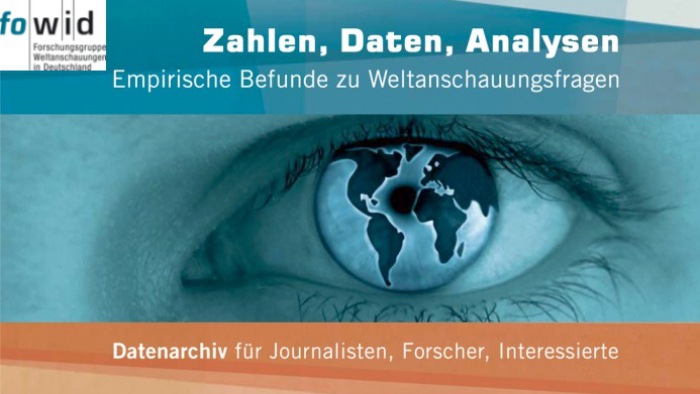Majority Against Religious Symbols in Schools
Results of a representative study on the Berlin Neutrality Act
49 percent of Germans support a law prohibiting teachers from visibly wearing religious symbols or clothing in public schools, 43 percent are against such a law, 7 percent are undecided. This is the result of an EMNID survey commissioned by the Giordano Bruno Stiftung and the Forschungsgruppe Weltanschauung in Deutschland (fowid - Research Group on Worldviews in Germany) following the debate on the "Berlin Neutrality Act".
The "Neutrality Act", which was passed in Berlin in 2005, prohibits the visible wearing of religious symbols and clothing such as headscarves, crosses or kippas in public service. For a while now the Berlin House of Representatives has been arguing about whether the law should be upheld or fundamentally revised. Clearly, the worldview neutral state must not only prohibit its public servants from wearing the Islamic headscarf, which has a clear majority in the population, but must also extend the prohibition to all religious or ideological symbols and clothing. But how does the population assess this?
In order to provide empirical data, EMNID conducted a representative survey on behalf of the Giordano Bruno Stiftung and the Forschungsgruppe Weltanschauungen in Deutschland. The question was deliberately phrased openly so that it does not only refer to the "Berlin Neutrality Act", which is hardly known in large parts of Germany. In addition, the question was limited to teachers in order to avoid making the already complicated question even more difficult by also referring to judges or police officers.
The question asked by EMNID was (translated from German only for this website): "There are various discussions about the visible wearing of religious symbols or clothing such as headscarves, crosses, or kippas in public schools. What is your attitude towards a law according to which teachers in public schools are NOT allowed to wear visible religious or ideological symbols or garments such as headscarves, crosses, or kippas?" The participants in the survey were able to answer this question with "I support it" or "I reject it".
Even though the number of respondents in individual sub-groups is relatively small, the survey results show interesting trends. For example, supporters of strict neutrality in public service are more likely to be among the western part of the republic (50 percent supporters vs. 41 percent rejecters) than the eastern part (46 vs. 52). In addition, nondenominational people throughout Germany clearly vote for a regulation equivalent to the Berlin Neutrality Act (55 percent vs. 40 percent), while church members tend to be undecided on this issue (Catholics: 44 percent vs. 42 percent, Protestants: 47 percent vs. 50 percent).
A detailed analysis of the EMNID survey can be found on the website of the Forschungsgruppe Weltanschauungen in Deutschland (German language):
https://fowid.de/meldung/mehrheit-gegen-religioese-symbole-schuldienst
The Giordano Bruno Stiftung supports the "Pro-Neutralitätsgesetz" initiative:

